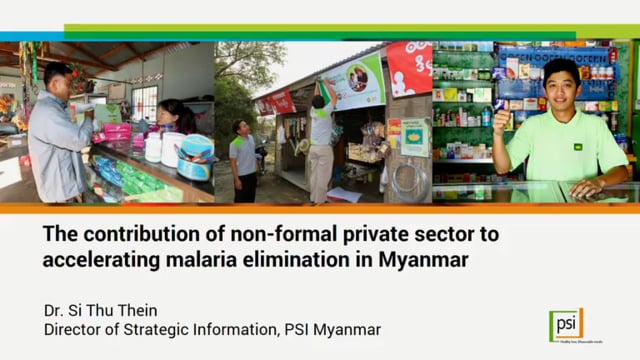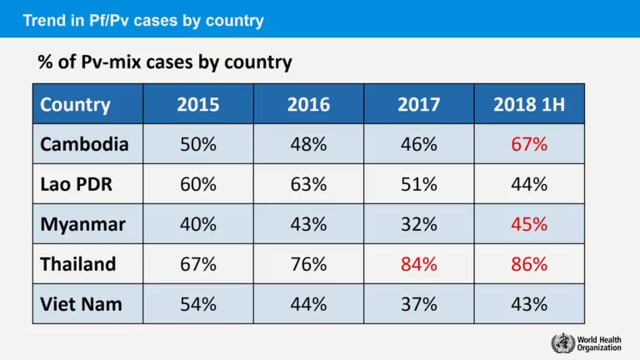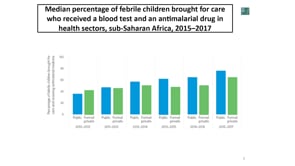ASTMH 2018, Manuela Tolmino/ Si Thu Thein: “The contribution of the non-formal private sector to accelerating malaria elimination in Myanmar”
Collaborator(s): Population Services International (PSI), United States
Countries: Myanmar
Published: 31/10/2018
In collaboration with ASTMH, Image Audiovisuals, and session presenters, MESA brings you this webcast from the 67th ASTMH annual meeting in New Orleans, October 2018
Title: “The contribution of the non-formal private sector to accelerating malaria elimination in Myanmar”
Speaker: Si Thu Thein, PSI
Session information:
October 31, 2018, 4:00 PM – 5:45 PM, Marriott – La Galerie 1/2 (2nd Floor)
Abstract:
The Greater Mekong Subregion, an area with widespread resistance to artemisinin-combination therapies (ACT) used for the treatment of malaria, has been targeted for elimination of both P. falciparum and P. vivax malaria by 2030, primarily driven by the goal of protecting these drugs for continued use in control and elimination activities worldwide. In response to implementation of effective interventions, the number of cases has dropped substantially in the last decade. As caseloads drop, foci of transmission, even among traditionally high-risk populations, become smaller and more difficult to identify. Approaches to testing, treating, and reporting therefore have to constantly be refined in response to a more elusive target. In the GMS, approximately 40-60% of populations access care in the private sector; therefore governments must have access to private sector surveillance data for resource planning and targeting elimination efforts. WHO works regionally with governments to achieve this better target efforts. They will share successes and challenges that governments in the region face in developing elimination-ready surveillance systems that integrate data from across the public, private and community sectors. PSI Cambodia has developed a dynamic and data-driven strategy for worksites, such as rubber plantations, a traditional ‘hot spot’, to better stratify and identify high-risk characteristics, more successfully find cases through better targeted testing, and more effectively target resources. The National Center for Entomology, Parasitology and Malaria Control in Lao PDR, with support from WHO and the University of Oslo (UiO), has strengthened its national surveillance system in DHIS2. As cases have dropped below 10,000 per year, Lao PDR has leveraged electronic integration with DHIS2 to enable reporting of geolocated case-based data from the private sector within 24 hours. UiO will discuss how interoperability with DHIS2 can help to overcome common challenges to accessing community and private sector data in national surveillance systems to support better targeting of response efforts. PSI Myanmar, recognizing that cases are increasingly localized in populations that have limited service delivery point access, has engaged the country’s large informal network of private providers. With the government’s support, they have increased reporting, improved quality of case management, and replaced oral artemisinin monotherapies with ACTs, helping providers become reliable partners in malaria elimination efforts. The symposium will demonstrate the importance of engaging the private sector if elimination is to be achieved, and how dynamic, innovative, and reliable strategies to do so.
THEMES: Capacity Building | Drug Resistance | Health Systems | Surveillance


